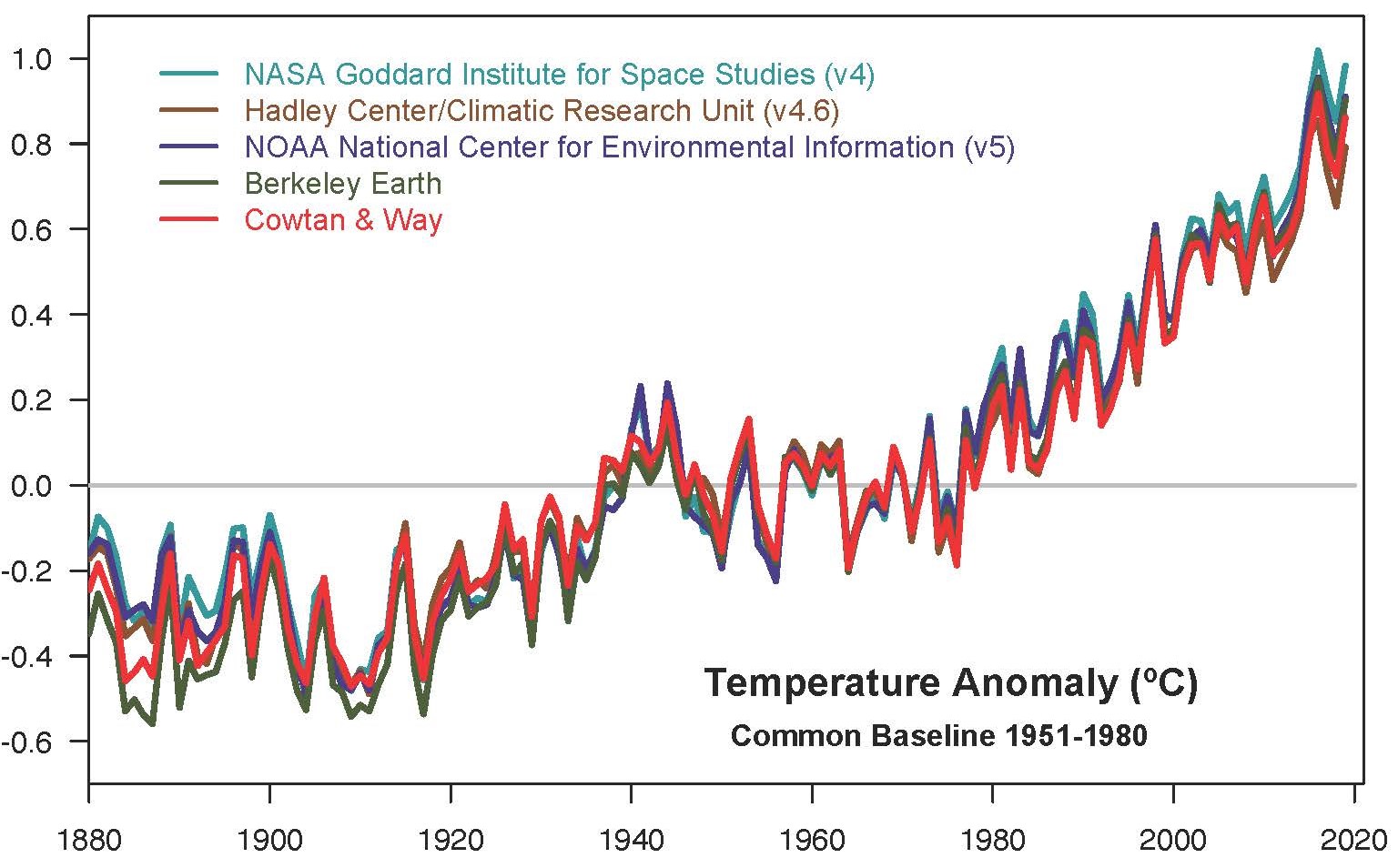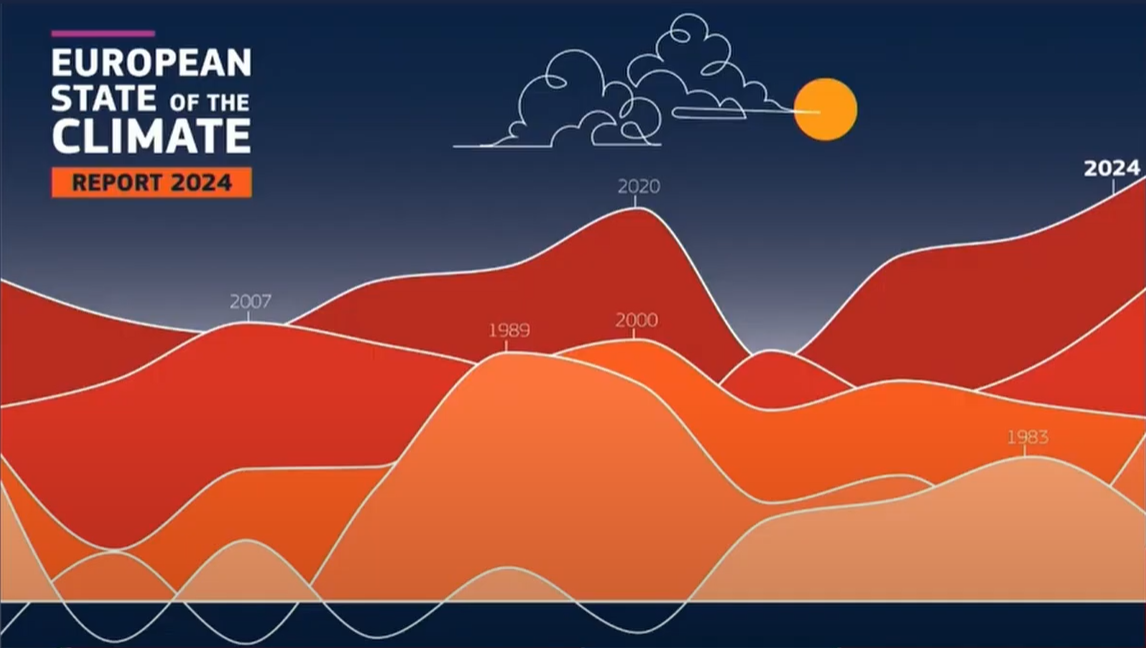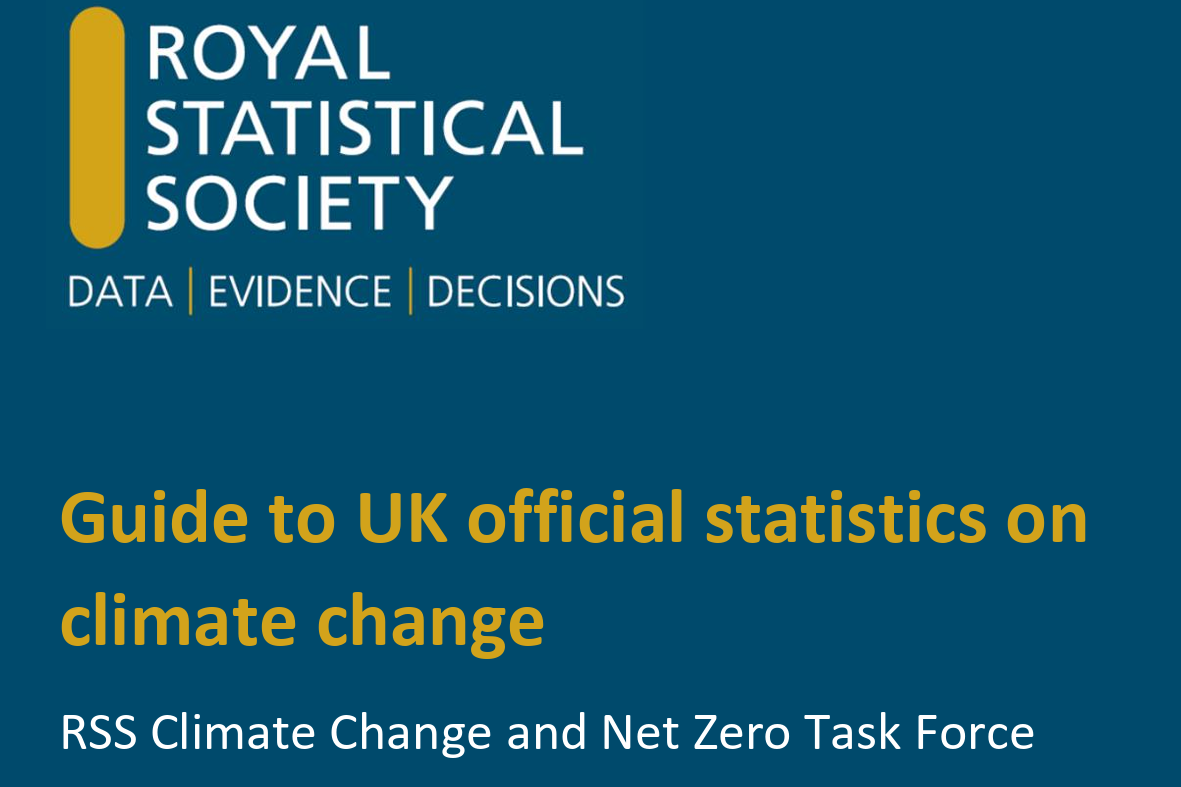

State of the Climate 2019
The World Meteorological Organization released the State of the Climate Report 2019, making for sober reading.
The report confirms that 2019 was the second warmest year in the instrumental record. The global average temperature was 1.1 °C above estimated pre-industrial averages, second only to the record set in 2016.
The report also states that the years from 2015 to 2019 were the five warmest years on record, and 2010-2019 was the warmest decade on record.
Weak El Niño conditions in the first half of 2019 may have contributed to the high global temperatures. Still, United Nations Secretary-General Antonio Guterres said that we are currently “way off track” to meet the targets set out in the Paris Agreement of limiting the temperature increase to either 1.5°C to 2°C.
He continued, “The results of this report demonstrate that climate change is already very visible in various ways. More ambitious climate mitigation efforts are needed to keep the warming below 2°C by the end of the century.
Of course, climate change does not only impact temperature alone. The report highlights how sea levels are rising at an increasing pace and that changes in the global distribution of rainfall have had a major impact on several countries.
More than 90% of the excess energy accumulated in the climate system due to increased concentrations of greenhouse gases goes into the ocean. This has cushioned the impacts of climate change, but it has significantly impacted the oceans.
The warming of the ocean has increased ocean stratification. Combined with ocean acidification and deoxygenation, this can lead to dramatic changes in ecosystems and biodiversity, population extinction, coral bleaching, infectious diseases, changes in behaviour (including reproduction) and redistribution of habitats. The starkest example is that coral reefs are projected to decline to 10%-30% of former cover at 1.5°C warming and less than 1% at 2°C warming.
Ocean warming has also contributed to sea level rise through the thermal expansion of seawater. Sea level has risen throughout the satellite altimetry records (since 1993), but the rate has increased, mainly due to melting of ice sheets on Greenland and Antarctica.
The average rate of rise is estimated at 3.24 ± 0.3 mm per year over the 27 years, but the rate has increased over that time. In 2019, the global mean sea level reached its highest value on record. More than 30% of that rise is due to the thermal expansion of the warming ocean.
The report highlights the many natural disasters that took place in 2019:
- Record high temperatures were recorded in Australia, India, Japan, and Europe.
- Drought affected many parts of Southeast Asia and Australia, with its driest year on record.
- Above-average fires were reported in several high-latitude regions, including Siberia in the Russian Federation and the US state of Alaska. In addition, fire activity occurred in some parts of the Arctic, previously extremely rare.
- Over 2,200 people lost their lives in flooding in India, Nepal, Bangladesh and Myanmar during the monsoon season. It started late but finished with rainfall totals above the long-term average.
- Tropical Cyclone Idai made landfall in Mozambique on 15 March as one of the strongest known on the east coast of Africa, causing widespread devastation. The cyclone resulted in at least 50,905 displaced persons in Zimbabwe, 53,237 in southern Malawi and 77,019 in Mozambique.
It is impossible to attribute individual weather events to climate change alone, and some of the disasters of 2019 were at least partly due to natural events such as the Indian Ocean Dipole, which strongly suppressed the rain across Australia and Asia. However, the events of 2019 align with predictions of the types of change predicted by computer models and scientists in a warming world.
Between January and June 2019, more than 6.7 million new internal disaster displacements triggered by hydrometeorological events were recorded. This number was forecast to reach 22 million in 2019, up from 17.2 million in 2018. Of all natural hazards, floods and storms contributed most to displacement.
The State of the Climate Report 2019 is the latest in a long line of publications which show that we are not on track to limit the global temperature rise to 1.5°C or 2.0°C. However, it also shows what can be expected if the current heating trend continues. The report includes input from numerous national meteorological and hydrological Services, scientific institutions and United Nations agencies and therefore is the most comprehensive report of its kind.
The authors describe it as a piece of authoritative information for policymakers on the need for Climate Action. The question is, are they listening?
This article was contributed to theWeather Club by our guest author, Steff Gaulter.




